|
Docking Ring 2
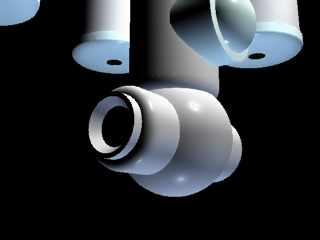
Function:
To enable spacecraft to dock with the Station
This is where other spacecraft link to the space station, so that passengers and supplies can be transferred between the two. There are two docking states: a "soft dock", when the two vehicles come into contact at the docking port; and the "hard dock", when an airtight seal is made mechanically between the two vehicles' docking rings. This is essential for the safe transfer of the passengers.
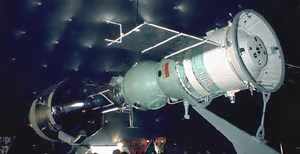
© Image: J W Hodges
This photograph is of the historic occasion when the US Apollo astronauts were able to dock with the Russian (then the Soviet Union) Soyuz spacecraft, so heralding an era of international space collaboration that continues with the International Space Station. In 1975 there was a significant breakthrough in the relationship between the Soviet Union and the USA. Until that time these two superpower nations had used space exploration as a substitute for military confrontation. You might say they were like two little boys showing off to each other! But that doesn't make small the achievements of both nations in their space endeavours. What was achieved was technically brilliant. Brave men and women risked their lives, and the technology that has come from the space programmes has transformed the world.
The other benefit of the space programmes is debatable, but worth considering. Competition in space exploration - the Space Race, as it was called - may well have been a substitute for real armed confrontation. The two superpowers could adequately show off their prowess without hurting each other. Additionally, although the two countries did use space for military purposes (eg spy satellites), neither has launched weapons into space, thereby violating the UN Outer Space Teaty. By and large, those involved in the use of space for all purposes have obeyed the rules of the Treaty. Space is being used for peaceful purposes. Countries are co-operating. Knowledge is being made freely available. And if the oportunity arises countries have assisted one another at times when emergencies occur.
The only thing that some countries have failed to do is clear up the results of falling debris from failed missions and expended spacecraft. Like many things in life, the rules are followed until economics are involved. No-one likes the cost of clearing up. When did you last tidy your bedroom?
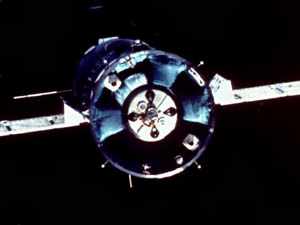 Docking is one of the most hazardous operations in space flight, second only to take-off. It was while the Commander of the Mir space station was docking an unmanned supply vessel to the Mir, by hand, that an accident occurred that damaged the solar array and punctured one of the modules of the Mir space station. This sent Mir spinning out of control, with air escaping from the hole in its skin. Only the determined and cool-headed actions of the crew were able to stop a simple error from becoming a catastrophe. Docking is one of the most hazardous operations in space flight, second only to take-off. It was while the Commander of the Mir space station was docking an unmanned supply vessel to the Mir, by hand, that an accident occurred that damaged the solar array and punctured one of the modules of the Mir space station. This sent Mir spinning out of control, with air escaping from the hole in its skin. Only the determined and cool-headed actions of the crew were able to stop a simple error from becoming a catastrophe.
So you think it's easy to do this without an automatic docking system? Try your hand at this docking game:

Station Visitors
Can you think of the types of spacecraft that will visit Space Station 2020 and dock here?
Take a look at some current Space Vehicles

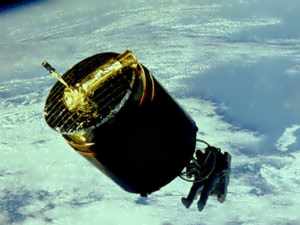
Artificial satellites are free flying robot spacecraft and are not built to dock with space stations. They usually orbit at much greater heights and are not fitted with docking equipment. Satellites are launched directly on rockets or from the cargo bays of space shuttle vehicles. However, by 2020 satellites may be built with manouevring systems that allow them to rendezvous with Space Stations. It is not likely they would dock directly, but it is most probable that they would be "collected" by one of the Space Stations's robot arms. They may then be parked by linking them to a spar or similar structure on the station, so they don't drift away. The Hubble Space Telescope underwent such an operation with the Space Shuttle when it was repaired and upgraded.
Return
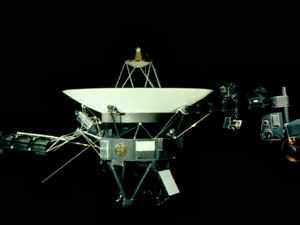 Robot Planetary Explorers Robot Planetary Explorers
These craft are launched directly from the ground and boost themselves off towards their destination. They do not come into contact with Space Stations. By 2020, though it is possible that planetary spacecraft too large to be launched in one piece from Earth may be assembled at a Space Station. Such planetary vehicles, though are unlikely to be robotic - you don't need big robot craft. They would be manned vehicles, perhaps for the exploration of the Moon or Mars. This image is of Voyager, two of which explored the outer planets and are now leaving the Solar System.
Return

 Supplies Pods Supplies Pods
Supplies Pods or autonomous supplies vehicles are unmanned capsules that allow the Space Station to be re-supplied, and equally important, to take away waste. Garbage disposal can be a problem on Space Stations! They will certainly need to dock with the Space Station to be unloaded. The supply pod for the Mir Space Station was called Progress.
Return

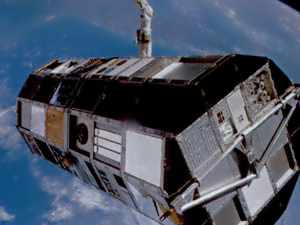 Free Flying Experimental Platforms Free Flying Experimental Platforms
Free flying expermental platforms are un-manned spacecraft that are like flat-bed trucks in space! They can carry anything that you care to fix to them. This is usually experiments and manufacturing equipment that need to be free of the Space Station (for safety or other reasons), or could be free of it (to provide more room on board). Such platforms would probably dock with the Station, but could also be fitted out with the robot arms and EVA visits from astronauts. The Long Duration Exposure Facility (LDEF), shown here, was released from the Shuttle Orbiter, Challenger on Mission 41C in April 1984. It was one of the first Free Flyers that was later recovered with completed experiments on board. As a result of the Challenger disaster the LDEF stayed in space much longer than planned.
Return
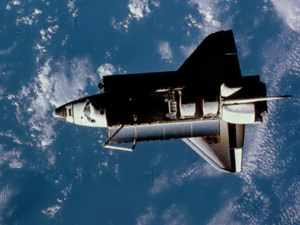 Shuttles Shuttles
The Space Transportation System or Space Shuttle is the principle means of getting to the International Space Station, and will be so for a long time. It is a general purpose vehicle that can carry both men and cargo in large volumes and masses. This is likely to still be in operation in 2020. A new Single Stage to Orbit shuttle, the VentureStar is under development and should be operational by 2020. This will probably replace the current Shuttle fleet in due course.
Return
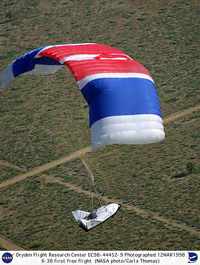 Emergency Escape Vehicles Emergency Escape Vehicles
Emergency Escape Vehicles are either manned-capsules or mini-shuttles. It will be essential that such vehicles can dock at any access port on the Space Station, for obvious reasons. A Soyuz spacecraft was used as the escape vehicle on the Mir Space Station. In the early phases of the ISS it will also be used. Later it will be replaced by a mini-shuttle. One such vehicle is under development in the United States - X-38.
Return
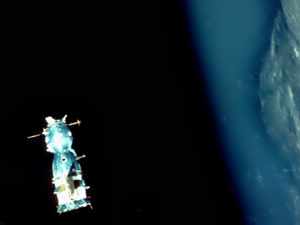 Manned Capsules Manned Capsules
Manned Capsules are launched by rockets and were the first means of manned spaceflight. Soyuz, Mercury, Gemini and Apollo are the best known. The only one still in use is the Soyuz, but it is likely that China and Japan may introduce such craft in the future. This capsule in the picture was used with Mir and is being used with ISS. Their use will gradually be phased out and by 2020 it is unlikely they will be in use for ferrying men and women to the Space Station. They may remain in service as supply vehicles, though.
Return
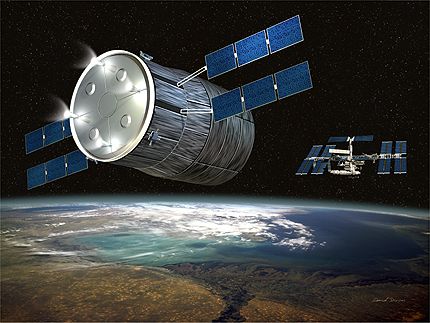 Space Tugs Space Tugs
Space tugs are better known as Automated Transfer Vehicles ( ATV), Orbital Manoeuvring Vehicles (OMV) and Orbital Transfer Vehicles (OTV). The first two are small robot spacecraft that can be manoeuvred easily, and are used to move spacecraft close to the Space Station. They are like harbour tugs at a sea port, or switcher locomotives in train yards (shunting engines in the railway goods depots). However, they are unmanned and operated from within the Space Station, by a skilled driver.
OTV's are more like the express locomotive. They take unpowered (or non-functioning) spacecraft from the Station to other, more distant orbits.
At present the ATV is the only vehicle under development. It will be used with the ISS for cargo transfer and supply. It is being built by ESA and the Russian Space Agency. The image shows an artists concept of ATV.
© Image: ESA /Ducros
Return

Go to Space Station 2020 Specification
Return to title page
 |













